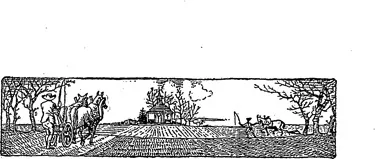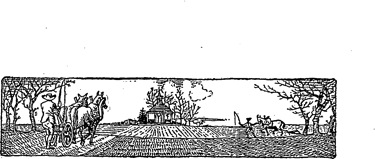

Encyclopedia of Practical Farm Knowledge
PART I. FARM ANIMALS: THEIR MANAGEMENT IN HEALTH EVERY farm animal is more than just a horse, or a cow or a pig—it is also a machine, an engine. Like other engines it requires fuel—that is, food. And whatever fuel it does not need to build up and run its own body it changes into something of value to its owner. This new product may be work, such as hauling a wagon, dragging a plow or carrying a rider; it may be milk, eggs, meat, wool or some other staple that man needs; it may be colts or calves for building up the herd, or to sell; it may be the dog’s effort in rounding up a flock of sheep or catching a woodchuck. The farm animal is a better engine—a more efficient one—than any made by man. For while the steam engine gives out only 10 units of power for every 100 units of coal fed to it, the animal gives out 20 units for every 100 units of food it consumes. The rest, in the case of the machine is used in running it, and in overcoming the rubbing of tight parts, or goes up the chimney as smoke. In the animal, part of the lost power runs the heart and other organs and makes good the wear and tear of nerves and muscles; the rest passes off in the breath, sweat, etc. Because the farm animal is a useful machine, and such a good one at that, it should be given plenty of care, of the right kind. Rest, kindness, good food, well-fitting harness, weather-tight barns, pure water, well-greased axles—these and many other details are just as effective and just as necessary for success with live stock as good gasoline for the automobile, oil in the bearings of mower or binder, or sharp edges on the cutter bar. The good farmer must be a good busi¬ness man; the good business man knows the worth of insurance; and one of the best forms of insurance for the farmer to invest in is the care and intelligent management of those things on which his success depends—and none is more important than his animals. This section of this book tells what the care of each kind of farm animal means and requires, and how to give that care most effectively and most economically. That is, it discusses first of all the practical details, the problems that most com¬monly confront the farmer. Matters mainly of reference value, such as the na¬ture, types, uses, and importance of each kind of farm animal are given second place, where they can be looked up when the reader has more time or when he is in need of information of that particular sort. All animals cannot be managed for best results according to one standard plan. They are individuals, each with its likes, dislikes, peculiarities, special needs, and special abilities. The more these individual traits can be taken into account the better. However, in all cases there are certain basic principles and practices which, if followed, lead toward success; their neglect leads toward almost certain failure. These principles and practices, as outlined in the follow¬ing chapters, every farmer should know.